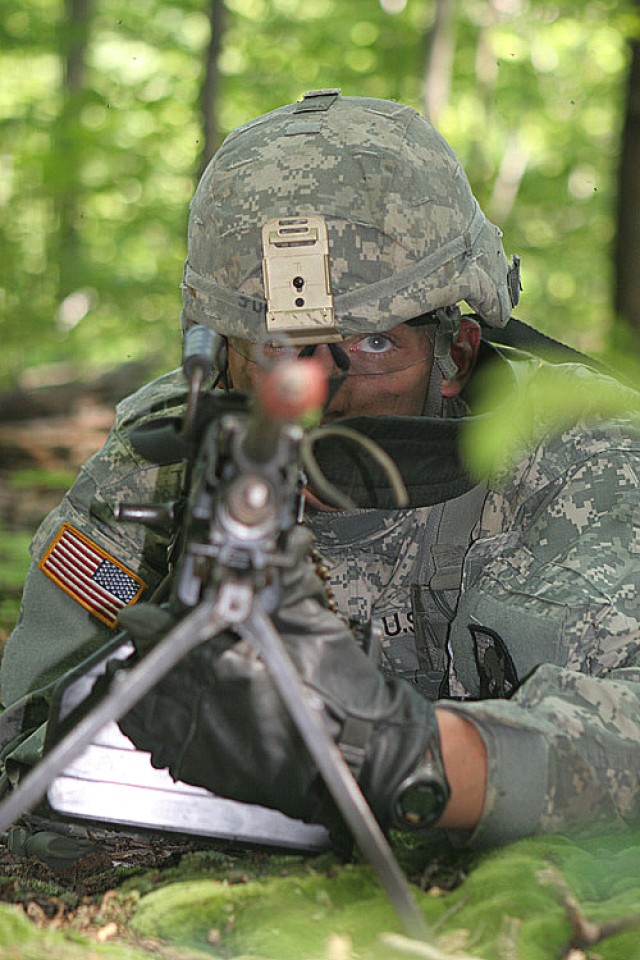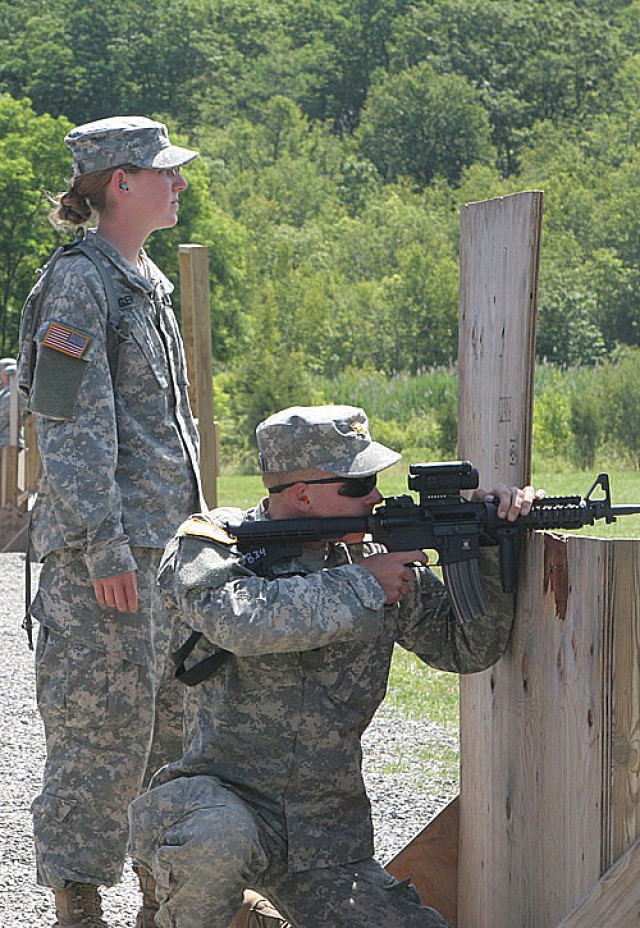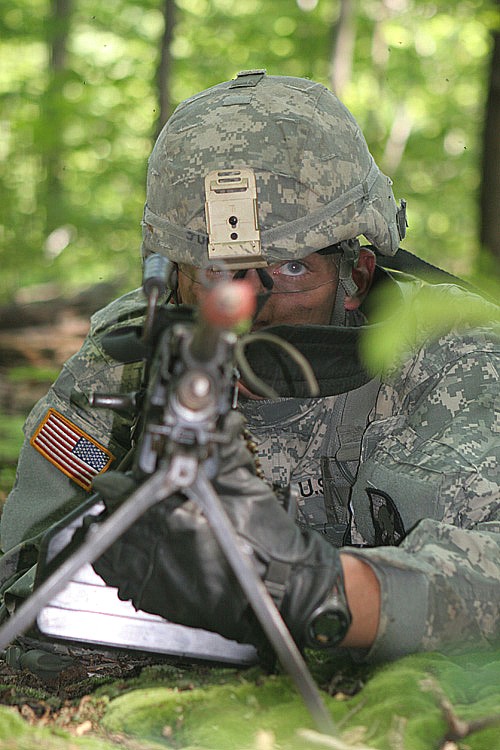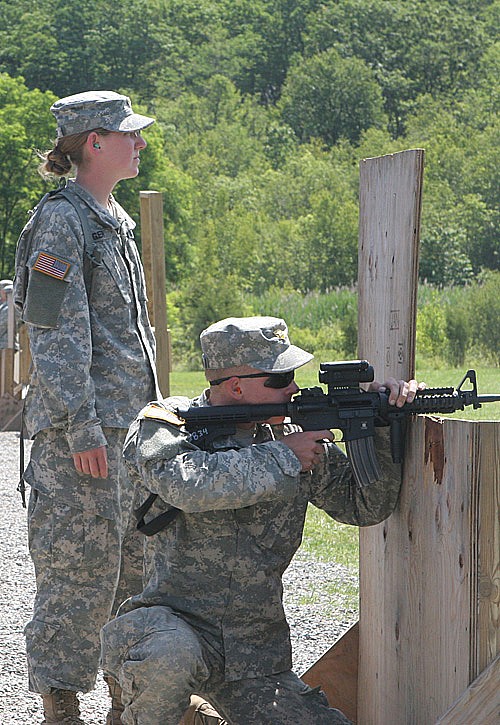This year's summer training marked a first for West Point upperclass cadets. In addition to the leadership duties of the cadet chain of command, these cadets actually trained with their underclassmen. It was a step in the direction of more relevant and realistic military training for the Corps of Cadets.
With just the assistance of tactical officers and the NCO Corps and because of a reduced summer task force, upperclass cadets conducted their own training with the rising Yearlings. Their goal was to establish a level of proficiency and trust in learning tactical and technical skills.
"It's a lot more work for the cadet leadership," Cow Christopher Einig, of 1st Company, Cadet Field Training, from St. Louis, said. "This year it's more of a leadership experience--it's much more rewarding. I appreciate the change from my perspective."
The new training approach put the lower cadet chain of command to work during Introduction to Patrolling. Each scenario began with a lane walker issuing an operations order to the cadet platoon leader--a Firstie--who in turn passed it down to their Cow squad leaders.
It was the squad leaders' responsibility to brief their Yearling squads on what to expect on the mission and conduct pre-combat checks and inspections. But the overall success or failure of the mission rested squarely on the shoulders of the
"The fact that the squad leaders do know and they do teach us gives our leadership more credibility," Yearling Nichole Siegrist, 1st Co., CFT, from Stronghurst, Ill., said. "It teaches us and our leadership to respect those positions more and understand them better."
Quite possibly the biggest test of trust was conducted at the live-fire ranges for Recondo badge qualification. No longer does marksmanship proficiency hinge on a go/no-go or a pass/fail standard.
The new goal of the underclassmen was to achieve a level of not just proficiency, but comfort and familiarity when firing weapons under different conditions.
"The cadet leadership is building trust in us," Christopher Newman, 2nd Co., CFT, from Fort Campbell, Tenn., said. "It allows us to get more out of our training."
Gone were the all-controlling range officer, his directions from the tower, and the designated safety officers with their red-and-white paddles.
The upperclass cadets reviewed the Yearlings' performance at combat speed with as many rounds as they wanted to shoot.
"Because we have so much time (to qualify), we're shooting so many rounds out here," Newman said. "It's like we're building muscle memory."
Of course, the potentially lethal risks of the live-fire ranges were mitigated with roving safeties who kept watchful eyes on each lane, as well as TACs and NCOs providing oversight.
"They want us to be proficient on target, while being safe and quick," Newman said. "Now that we covered the fundamentals of
With the changes in training method and style, the cadets this year were missing much of the interaction with active duty personnel that had been a staple throughout the history of summer training.
New blocks of instruction, such as the NCO Academy, provided windows of that exposure.
"For the rising Yearlings, they miss out because they do not have as much contact with NCOs as in previous years," Einig said. "But because of things like Fort Knox (all CFT cadets went to Fort Knox for training during CFT), the NCO Academy, and the field artillery and engineer site, they still have more exposure than they do during the school year."
In addition to the new teaching style, cadets were further immersed in military familiarity with all-new equipment such as the next generation Modular Lightweight Load-carrying Equipment and M4 carbines with M68 infrared scopes to replace the M16A2 rifles used last year.
"I think the training was more relevant because the purpose was to familiarize us more with different aspects of the Army, whether it was the infantry, armor, engineering or field artillery," Siegrist said. "They showed us what Soldiers will be working with and how we would be working as officers in that group. It really helped open our eyes to the different parts of the Army."
Overall, the cadets felt motivated and ready to learn what their upperclassmen had to teach them. The upperclass, in turn, recognized parts of the training that did and did not flow smoothly, and how they could be improved for next year's summer training.
"I really do like the active (squad and platoon leaders and platoon sergeants) and that they're the ones doing the teaching," Einig said. "I think next year they'll have a better idea of how to organize it.






Social Sharing